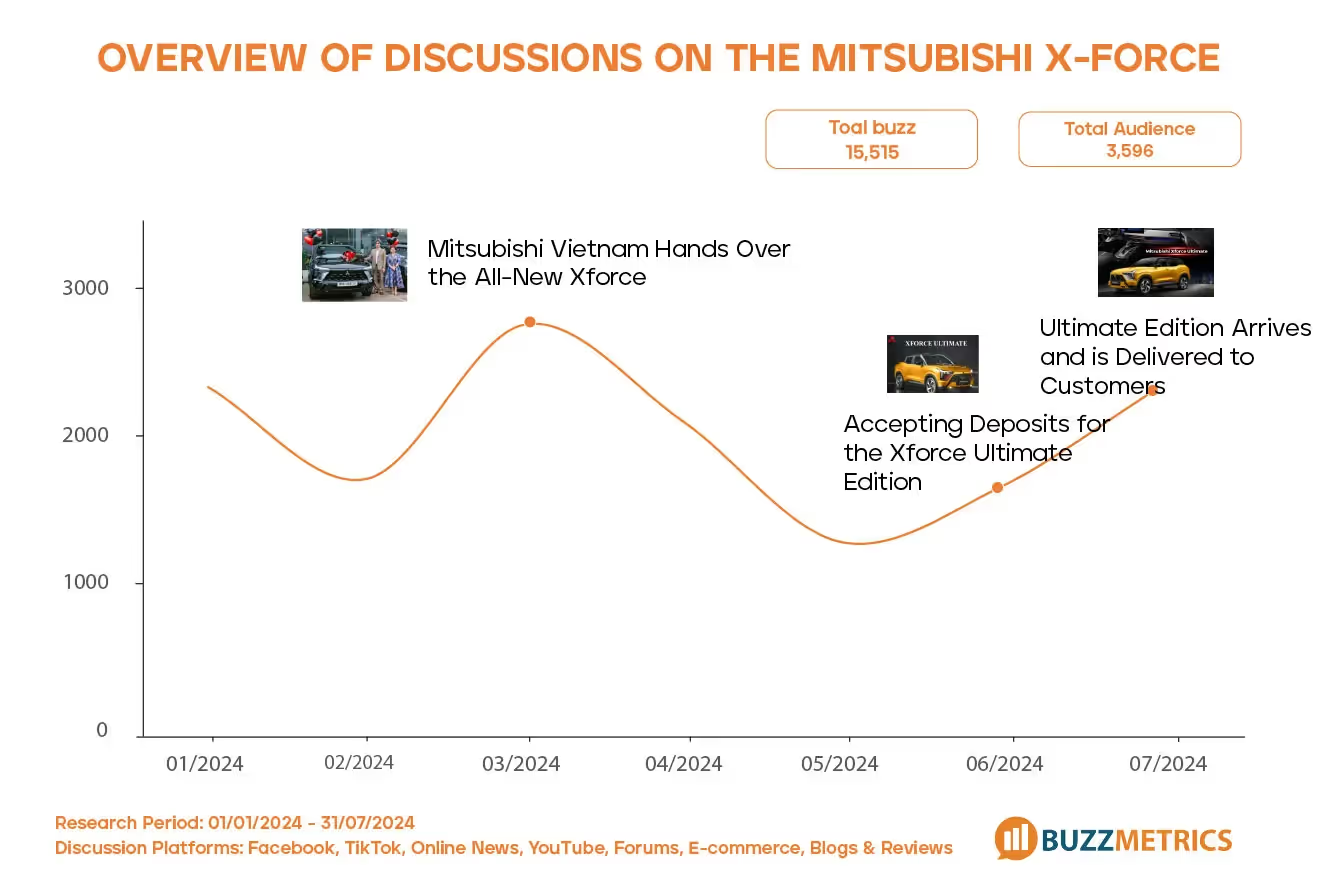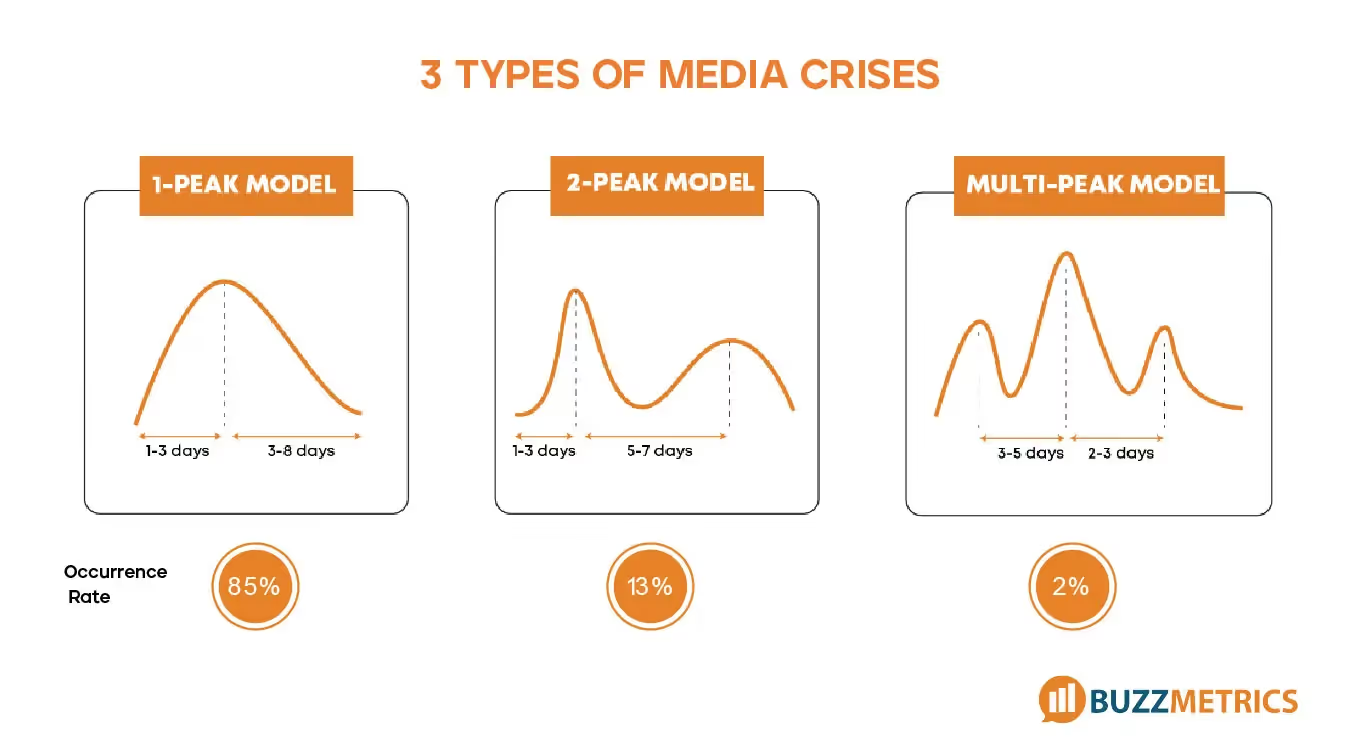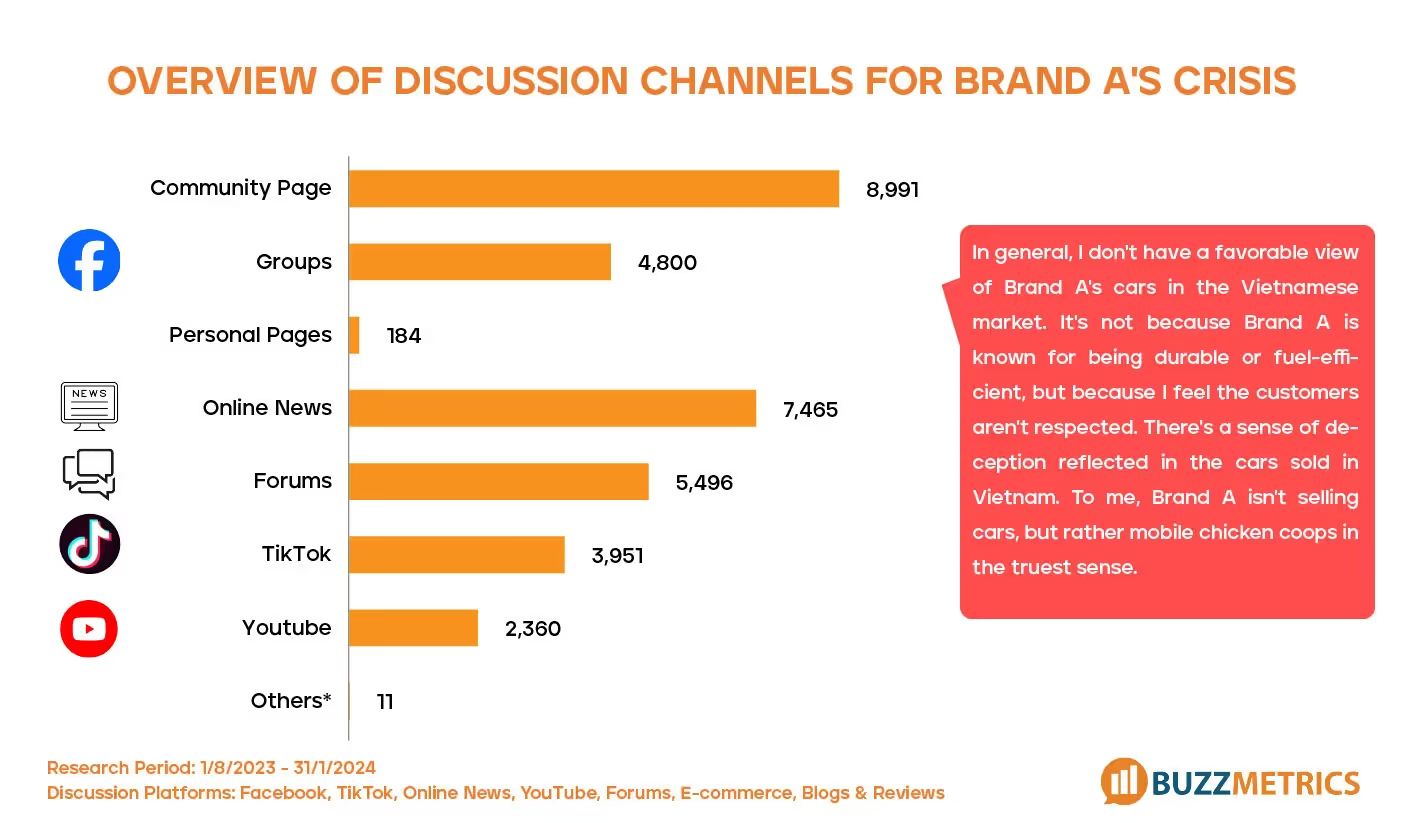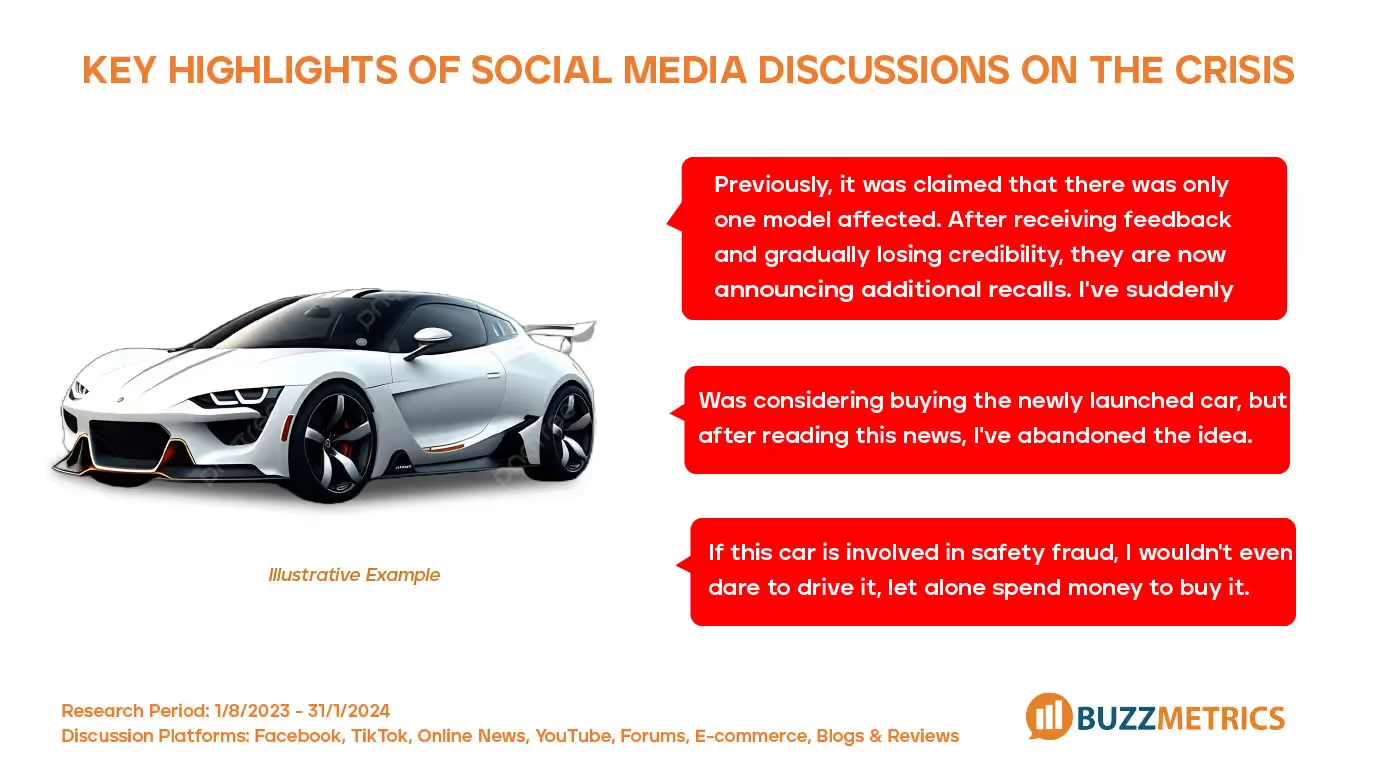Lessons from Automotive Industry Communication Crises

Media crises can happen to any brand at any time, especially in the age of booming social media. Therefore, building a specific response plan in case a media crisis occurs is a crucial factor in ensuring the brand's reputation in the market. In this article, Buzzmetrics will analyze a hypothetical crisis case study in the automotive industry. Through this, Buzzmetrics will offer suggestions for businesses to avoid mistakes when handling a crisis.
The case study data in this article is hypothetical, collected using Buzzmetrics' Social Listening tool, covering the crisis period from August 1, 2023, to January 31, 2024.
Summary of the Incident: In 2016, Toyota acquired all shares of Daihatsu. This partnership aimed to leverage Daihatsu’s expertise and technology, such as the DNGA platform, to develop compact vehicles. The communication crisis erupted in December 2023 when Toyota announced the suspension of Daihatsu vehicle sales due to safety fraud. Among the 20 affected models were Toyota Vios/Yaris vehicles using the DNGA platform. This also significantly impacted the Vietnamese market, as Toyota Vietnam announced on December 20, 2023, that it would temporarily halt the shipment of all Daihatsu-related vehicles to dealers for inspection.
1. Overview of the Automotive Industry on Social Media
With 33,962,264,150 discussions recorded from January 1, 2023, to December 31, 2023, the automotive industry is highly active on social media, with updates on the market, traffic, vehicle reviews, and buying/selling activities.

Despite being a dynamic industry with discussions from brands, online sellers, and consumers, the automotive sector is particularly sensitive to negative news, whether old or foreign. These negative stories often revolve around safety tests of airbags, vehicle undercarriages, etc.The question here is: How can brands protect their reputation and detect issues early? Or, in the worst-case scenario of a crisis, how can they mitigate risks and avoid a media crisis? Let’s explore how automotive brand A handled a crisis in the case study below.
2. Case Study: Vehicle Safety Inspection Violations – The Source of a Brand’s Crisis
a. Crisis Development on Social Media
In general, discussions about this brand surged in the second half of December when the crisis erupted in Vietnam on December 11, 2023. During other periods, conversations about the brand revolved only around the launch of new cars or vehicle reviews.

Looking closer, before the crisis occurred, brand discussions were relatively sparse and stable, remaining below 1,000 buzz, even during the product launch event in September 2023. This shows that while the launch of a new product is an important event, it was not enough to spark a significant surge in discussions on social media. During this period, the brand remained under control, facing no major public pressure or impact. However, from December 18, 2023, the crisis escalated, and discussions spiked dramatically to 8,489 buzz, an increase of about 8 times compared to normal levels. This sudden spike reflects not only a high level of public interest but also the potential danger and spread of the crisis. This crisis not only affected the brand's image but also posed the risk of widespread and prolonged consequences.
After the crisis broke out, the brand took timely action. This is evidenced by the rapid drop in buzz, forming a single peak on the chart. This is a positive sign, demonstrating that the brand had an effective crisis management plan, helping to stabilize the situation quickly and minimize damage.

People often think that media crises occur randomly without any patterns. In reality, every media crisis follows one of three main models:
1-Peak Model
- This is the most common pattern during a media crisis, accounting for 85% of cases. In this model, the crisis has a single peak. In the first 1-3 days, the crisis escalates rapidly and reaches its peak. After reaching the peak, public and media interest gradually declines over the next 3-8 days.
- This model typically reflects crises with short-term, concentrated impact, where a single incident or negative information spreads quickly and then cools down. If the company or organization manages the peak stage well, the situation can be effectively controlled.
2-Peak Model
- This model accounts for 13% of crisis cases and has two peaks. The first peak occurs within 1-3 days, followed by a period of calm for a few days. However, a new factor (possibly additional information or a response from a stakeholder) causes the crisis to flare up again, creating a second peak within 5-7 days.
- This model usually occurs when there are multiple complex factors or when the crisis involves a series of interconnected events. Managing this model requires preparation for unexpected situations, as well as the ability to respond to new factors that emerge after the initial crisis wave.
3-Multi-Peak Model
- This is the rarest model, accounting for only 2% of cases. In this model, the crisis has multiple peaks. The first peak occurs within 3-5 days, and the subsequent peaks appear over the next 2-3 days.
- This model typically reflects a prolonged and complex crisis, where multiple factors continue to emerge or various stakeholders repeatedly trigger the crisis. This requires the company or organization to have a long-term strategy and be ready to deal with multiple crisis waves while maintaining a high level of vigilance throughout an extended period.
b. Mechanism of Media Crisis Spread
From August 1, 2024, to January 31, 2024, Facebook, online news sites, and forums were the three platforms most used when users discussed Toyota and the incident.

In December 2023, brand A’s crisis erupted on social media, with online news outlets serving as the source of the crisis. Specifically, several major news outlets in Vietnam reported that the brand had announced a halt on all newly manufactured vehicles due to violations related to safety testing. The situation truly escalated when a group of consumers began paying attention, discussing, and spreading the news on large forums such as Otofun and Beatvn, creating a massive wave in a short period.
c. How Did Consumers React to the Crisis?
The significant increase in negative discussions impacted users' trust in the quality of the car models.

d. The Impact of the Crisis on Brand A from a Social Listening Perspective
- Impact on Brand Image:The crisis caused the brand's sentiment index to drop significantly (-0.96) due to numerous complaints. Among them, the brand's attributes received the most negativity. Therefore, the key issue for the company is to improve its brand perception through upcoming communication efforts.

- Loss of Customer Trust (Brand Trust): As consumers were exposed to multiple sources of information, and the authenticity of the issue became clearer, negative feedback about the brand increased, being linked to various aspects of the crisis.
- Impact on Consumer Purchase Decisions:Discussions sharing distrust toward the brand and concerns over quality were particularly notable in users' negative feedback. This indirectly affected potential customers' decisions to purchase vehicles, even impacting the newly launched model from September 2023.

3. What Solutions Did the Car Brand Implement to Resolve the Media Crisis?
To resolve the crisis, it is essential to address the root cause – the true origin of the crisis. Since online news outlets were the primary medium for disseminating the crisis, Brand A immediately released PR articles to neutralize public sentiment.
Press outlets played a crucial role in conveying information to the community effectively, as official sources help build public trust and alleviate negative emotions. Besides major Vietnamese news platforms like Vnexpress.vn and Baomoi.com, specialized car market publications such as Otosaigon.com should also be prioritized for monitoring during incidents. The brand continuously updated accurate content about the situation, rectifying both accurate and inaccurate information to prevent the crisis from escalating beyond control. Transparency and a commitment to rectification will help rebuild customer trust in the brand.
4. What Additional Measures Should the Brand Take to Resolve the Crisis?
According to Buzzmetrics' crisis management process, in the initial phase, besides running PR campaigns, the brand should also use seeding or launch an Advocacy Marketing campaign to guide public sentiment.

a. Launch an Advocacy Marketing Campaign
Alongside providing updates through paid media channels, the brand should use seeding to manage the narrative. Seeding positive content helps reshape public perception and counteract negative information. By strategically crafting a seeding scenario, the brand can steer conversations in a more favorable direction.
b. Amplify Social Media Communication Once Emotions Have Calmed:
Some time after the crisis subsides, the situation will quiet down. This is the moment for the brand to intensify its communication regarding its car models, focusing on the functional benefits of the vehicles:
- In terms of format and platform: The automotive industry heavily relies on visuals, so the brand should leverage formats like images and test-drive review clips on major platforms in the car sector, such as Facebook and TikTok.
- In terms of content: Focus on car reviews, showcasing the vehicle's image, particularly around design points related to "Performance" and "Pricing" – strategic must-win factors that primarily influence user behavior.
5. Conclusion
The crisis faced by Brand A highlights the tremendous influence of social media. Monitoring the evolution of discussions on social media allows companies to respond promptly to crises, helping to safeguard the brand's reputation in the market. Buzzmetrics’ automotive industry-specific solution package will help brands:
- Quickly detect and assess the impact of negative information on social media.
- Understand user reactions during crises, enabling appropriate responses.
- Evaluate the crisis aftermath to learn valuable lessons for the future.
Register now to receive expert advice here: https://www.buzzmetrics.com/nganh-hang/automotive
Article Information










.png)

.webp)


_11zon.avif)






